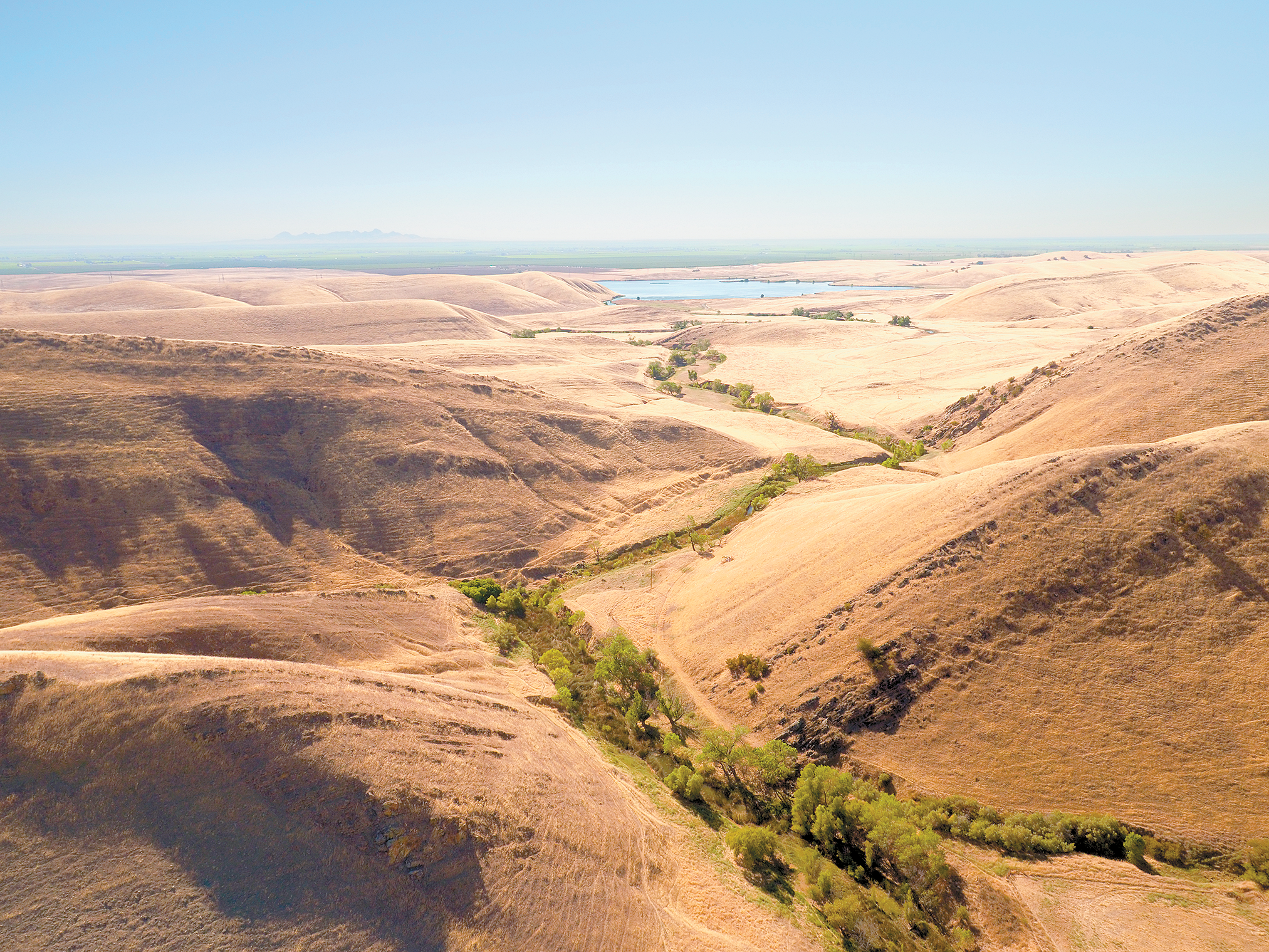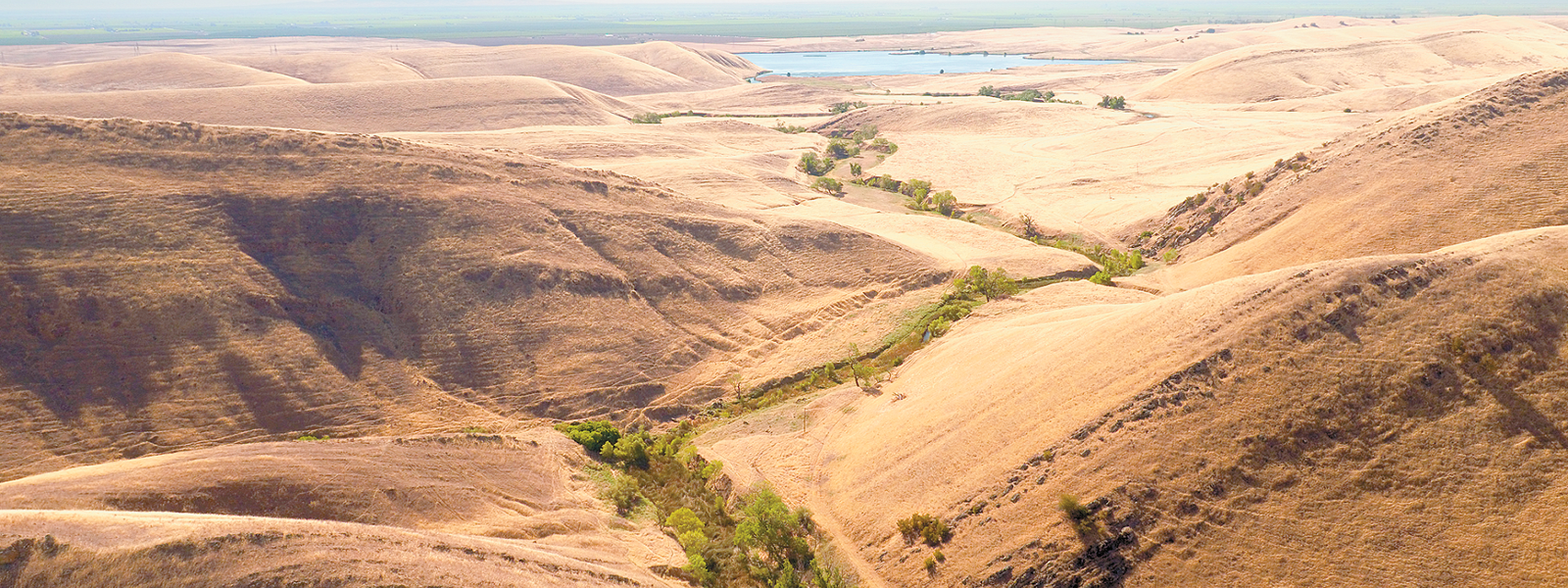Sites Reservoir on fast track for final legal green light

The proposed Sites Reservoir, designed to hold 1.5 million acre-feet of water, would be the first major reservoir built in California in almost half a century. It would be located about 80 miles northwest of Sacramento, left, in Colusa and Glenn counties.
Photo/John Hannon

By Caleb Hampton
After decades of discussions and delays, a major new reservoir in Northern California is close to becoming reality.
Last week, Gov. Gavin Newsom certified the Sites Reservoir project to be fast-tracked for construction, exercising for the first time his power under a new state law to streamline the process to break ground on infrastructure projects.
The reservoir, estimated to cost $4.5 billion and hold 1.5 million acre-feet of water, would be the first major reservoir built in California in almost half a century.
It would be located about 80 miles northwest of Sacramento on ranchlands in Colusa and Glenn counties.
“The project we are considering today will help the state meet key climate change goals and create a more resilient water supply for Californians and the environment,” Fritz Durst, chairman of the Sites Joint Project Authority, said in a statement.
Earlier this year, Newsom pushed the California Legislature to pass a package of bills designed to limit regulatory delays to water, energy and transportation infrastructure projects.
Senate Bill 149, authored by state Sen. Anna Caballero, D-Merced, requires courts to resolve legal challenges brought under the California Environmental Quality Act within 270 days for certified projects.
In the past, such challenges have delayed infrastructure projects for years.
“We’re cutting red tape to build more faster,” Newsom said in a statement. “These are projects that will address our state’s biggest challenges faster, and the Sites Reservoir is fully representative of the goal—making sure Californians have access to clean drinking water and making sure we’re more resilient against future droughts.”
The first plans for Sites Reservoir were drawn up more than 40 years ago.
The project has gained momentum since 2014, when California voters overwhelmingly approved a bond authorizing $2.7 billion for new water storage projects. About $875 million from that bond, alongside other state funds and federal loans, would be used for Sites Reservoir, with the remaining balance paid by water agencies and communities benefiting from the reservoir.
“Water infrastructure needs to move forward,” said Chris Scheuring, senior counsel for the California Farm Bureau. “It’s in the best interest of all the people in the state of California.”
Water users in the state have long expressed frustration at missed opportunities to capture water in wet years—such as this past year that brought historic storms and flooding—and store it for use on farms and in homes during drought years.
“There is no existing infrastructure in place to capture and store excess water flows from the Sacramento River when they happen,” Durst, a Yolo County farmer, said last year.
The reservoir will play a key role in managing runoff to support the flood control system in the Sacramento-San Joaquin River Delta, he added.
“The reservoir’s storage flexibility, working in concert with our existing water management systems, could also help us respond more rapidly and in an adaptive fashion to the changing hydrologic conditions and the changing needs,” Durst said.
On Nov. 2, the U.S. Bureau of Reclamation released its environmental impact report and statement for Sites Reservoir, finalizing plans for the project and opening it to legal challenges that would now be subject to California’s new time limits on litigation.
“We are proud to support projects that will provide operational flexibility and more reliable water delivery to benefit farms, communities and the environment,” Reclamation Commissioner Camille Calimlim Touton said in a statement.
The off-stream storage facility, set to become the eighth-largest reservoir in the state, would not sit on a waterway but would have water piped into it from the Sacramento River.
The reservoir would increase Northern California’s water storage capacity by up to 15% and boost water supplies for 24 million people, mostly in Southern California, and a half-million acres of farmland in the Central Valley. It would also store water that could be used for environmental purposes.
The reservoir’s off-channel design means it will not impede fish migration routes. But environmental groups have still criticized the project because it will divert water that nourishes wildlife and natural landscapes.
“I would guess we’re going to see some legal challenges,” Scheuring said. “However, it’s nice to know that a fixed time period is now established and that we’ll move through those challenges as expeditiously as possible.”
Construction of the reservoir is expected to begin within the next two years and be completed around 2030 or 2031.
“The name of the game,” Scheuring said, “is to get done with all the process—the funding, legislation, litigation, environmental review—and get a shovel in the ground to do what we’ve been talking about doing for a generation.”
(Caleb Hampton is an assistant editor of Ag Alert. He may be contacted at champton@cfbf.com.)




